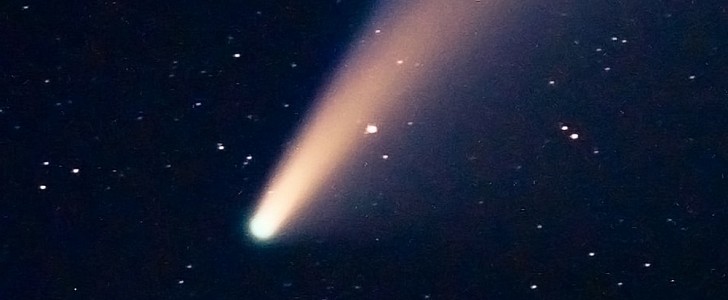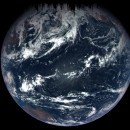Don’t look up now but there’s a mega comet hurtling through our solar system. It’s called the Bernardinelli-Berstein comet, and it is estimated to be the largest comet ever discovered, measuring roughly 85 miles (137 km) in diameter, give or take 10.5 miles (17 km). This bad boy will make its closest approach to Earth in 2031.
We needn’t worry though, because even at its closest approach, it will only be within 11 au of the Sun (1 billion miles), where 1 au is the average distance between the Earth and the Sun. Basically, it shouldn’t come any closer than Saturn, meaning it will probably not even be visible to the naked eye.
Back to its size for a moment, not only is this the largest Oort Cloud object ever detected (nearly twice as big as comet Hale-Bopp), it’s also bigger than Comet Sarabat, which had a nucleus measuring roughly 62 miles (100 km) in diameter, as per Gizmodo.
Astronomers first detected this gigantic inbound object when it was still extremely far away, about 29 au from the Sun (2.9 billion miles). However, we couldn’t really understand its significance until it came within 24 au of the Sun (2.2 billion miles). Because of its remarkable brightness, initial estimations pointed to this comet sitting pretty at between 62 and 230 miles (100 to 370 km) wide – a cosmically ridiculous size.
Now we know better though, with thermal emissions pointing to the previously mentioned 85-mile (137 km) diameter. It's still massive, obviously. We don’t know its exact shape though, nor can we estimate exactly how much material the comet will lose during its trip around the Sun, which is when we can expect it to get its distinctive coma and tail, as volatiles on its surface, such as ice, turn into gas.
As for the safety of our planet, if a comet or asteroid was ever on a collision course with the Earth, it wouldn’t even need to be as big as Bernardinelli-Bernstein in order to cause an extinction-level event. In fact, the asteroid that is believed to have wiped out the dinosaurs was only 7.5 miles (12 km) in diameter.
Back to its size for a moment, not only is this the largest Oort Cloud object ever detected (nearly twice as big as comet Hale-Bopp), it’s also bigger than Comet Sarabat, which had a nucleus measuring roughly 62 miles (100 km) in diameter, as per Gizmodo.
Astronomers first detected this gigantic inbound object when it was still extremely far away, about 29 au from the Sun (2.9 billion miles). However, we couldn’t really understand its significance until it came within 24 au of the Sun (2.2 billion miles). Because of its remarkable brightness, initial estimations pointed to this comet sitting pretty at between 62 and 230 miles (100 to 370 km) wide – a cosmically ridiculous size.
Now we know better though, with thermal emissions pointing to the previously mentioned 85-mile (137 km) diameter. It's still massive, obviously. We don’t know its exact shape though, nor can we estimate exactly how much material the comet will lose during its trip around the Sun, which is when we can expect it to get its distinctive coma and tail, as volatiles on its surface, such as ice, turn into gas.
As for the safety of our planet, if a comet or asteroid was ever on a collision course with the Earth, it wouldn’t even need to be as big as Bernardinelli-Bernstein in order to cause an extinction-level event. In fact, the asteroid that is believed to have wiped out the dinosaurs was only 7.5 miles (12 km) in diameter.






